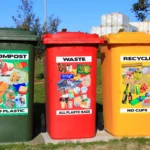Water-Saving Devices That Can Cut Your Bill in Half
Are you tired of high utility bills and looking for smart ways to reduce your water consumption? Water-saving devices offer a practical, eco-friendly, and cost-effective solution. With just a few smart upgrades, you can drastically cut your water usage—and your bill—without sacrificing comfort or convenience.
Why Invest in Water-Saving Devices?
Water is a precious resource, and using it wisely is essential for both environmental sustainability and your wallet. By installing water-saving technologies in your home, you not only help conserve natural resources but also benefit from significantly lower monthly utility costs.
Top Water-Saving Devices That Actually Work
1. Low-Flow Showerheads
These are designed to use less water without compromising on pressure. A good low-flow showerhead can reduce water use by up to 50% per shower.
2. Faucet Aerators
Aerators add air to the water stream, reducing flow while maintaining the feeling of full water pressure. They’re inexpensive and easy to install.
3. Dual-Flush Toilets
With two flush options, these toilets use far less water per flush compared to traditional models—perfect for cutting down on bathroom water waste.
4. Smart Irrigation Systems
These systems monitor weather conditions and soil moisture to ensure water is used efficiently in your garden or lawn, avoiding overwatering.
5. Water-Saving Dishwashers
Modern ENERGY STAR-certified dishwashers use significantly less water and energy than hand-washing or older models.
6. Leak Detectors and Smart Valves
These devices help identify leaks early and automatically shut off water in emergencies, saving thousands of gallons annually.
7. Rainwater Harvesting Systems
Capture rainwater for outdoor use, such as gardening and cleaning, reducing your dependency on treated municipal water.
8. Water-Efficient Washing Machines
High-efficiency washers use up to 40% less water than standard machines, especially front-load models.
How Much Can You Really Save?
- Up to 50% reduction in water usage with full adoption
- Potential $100–$300 annual savings on water bills
- Increased home efficiency and sustainability
Frequently Asked Questions (FAQs)
How do water-saving devices reduce my bill?
By limiting excess water usage, these devices help lower consumption, which directly reflects in your monthly water and energy bills.
Are water-saving devices expensive?
Not at all. Many are affordable, and the savings over time outweigh the initial investment. Some local utilities even offer rebates.
Do these devices affect performance?
Modern water-saving technologies are designed for efficiency without sacrificing comfort or function. Most users notice little to no difference in experience.
Can I install them myself?
Yes. Many water-saving devices like faucet aerators and low-flow showerheads are DIY-friendly and require minimal tools or expertise.
Is it worth replacing old appliances?
Absolutely. Older toilets, washers, and dishwashers use significantly more water. Replacing them can yield immediate and long-term savings.
Final Thoughts: Make the Switch to Save
With rising utility costs and growing environmental concerns, switching to water-saving devices is a smart move. These tools not only reduce your water footprint but also cut down your bills—sometimes by half.
Start small, think big. Begin with simple upgrades like faucet aerators or smart irrigation systems, and work your way up to larger appliances. Your wallet—and the planet—will thank you.




Pingback: Top 10 Water Conservation Technologies for 2025 -
Pingback: What Is Hydroelectric Power and How Does It Work? -